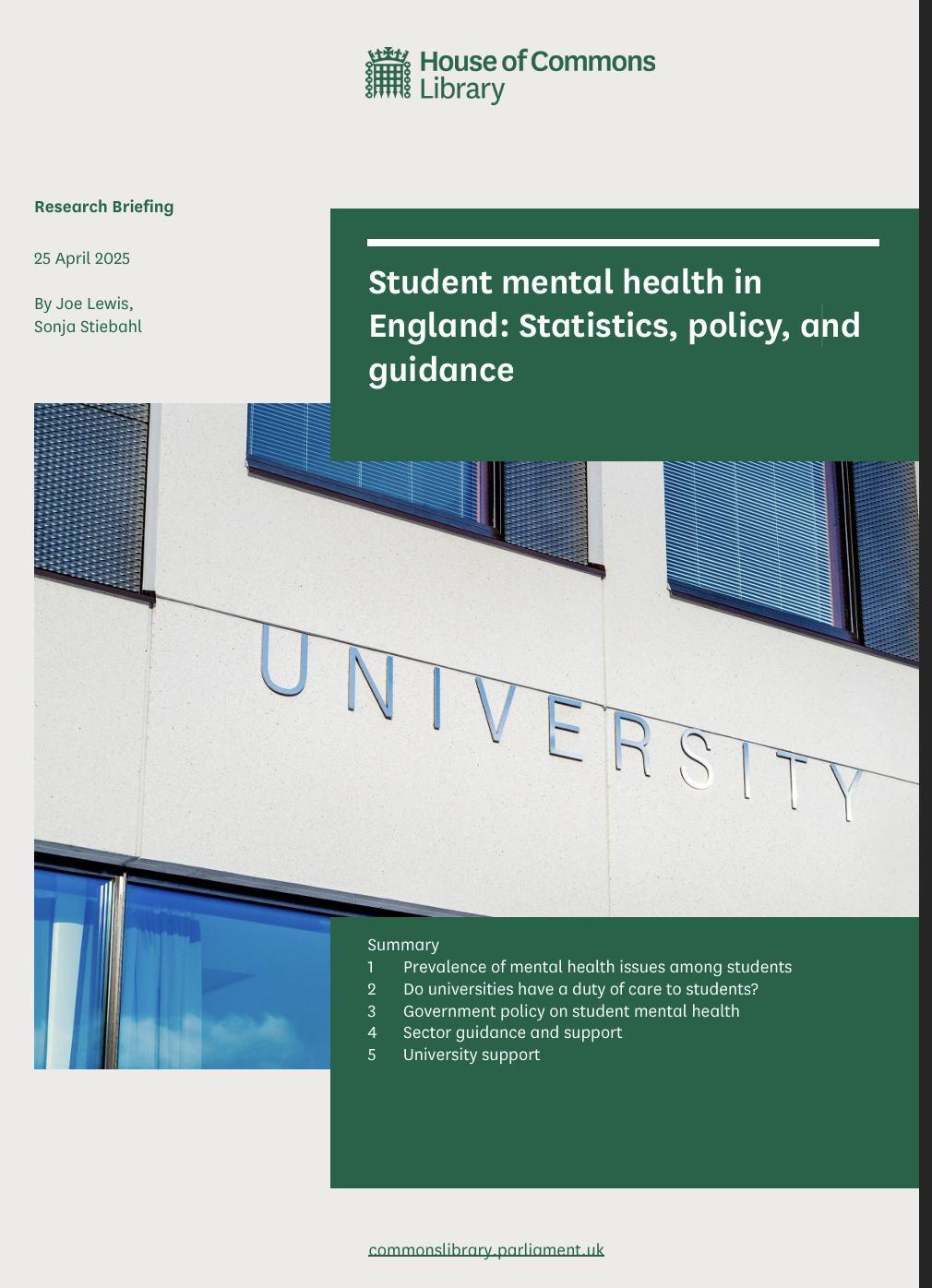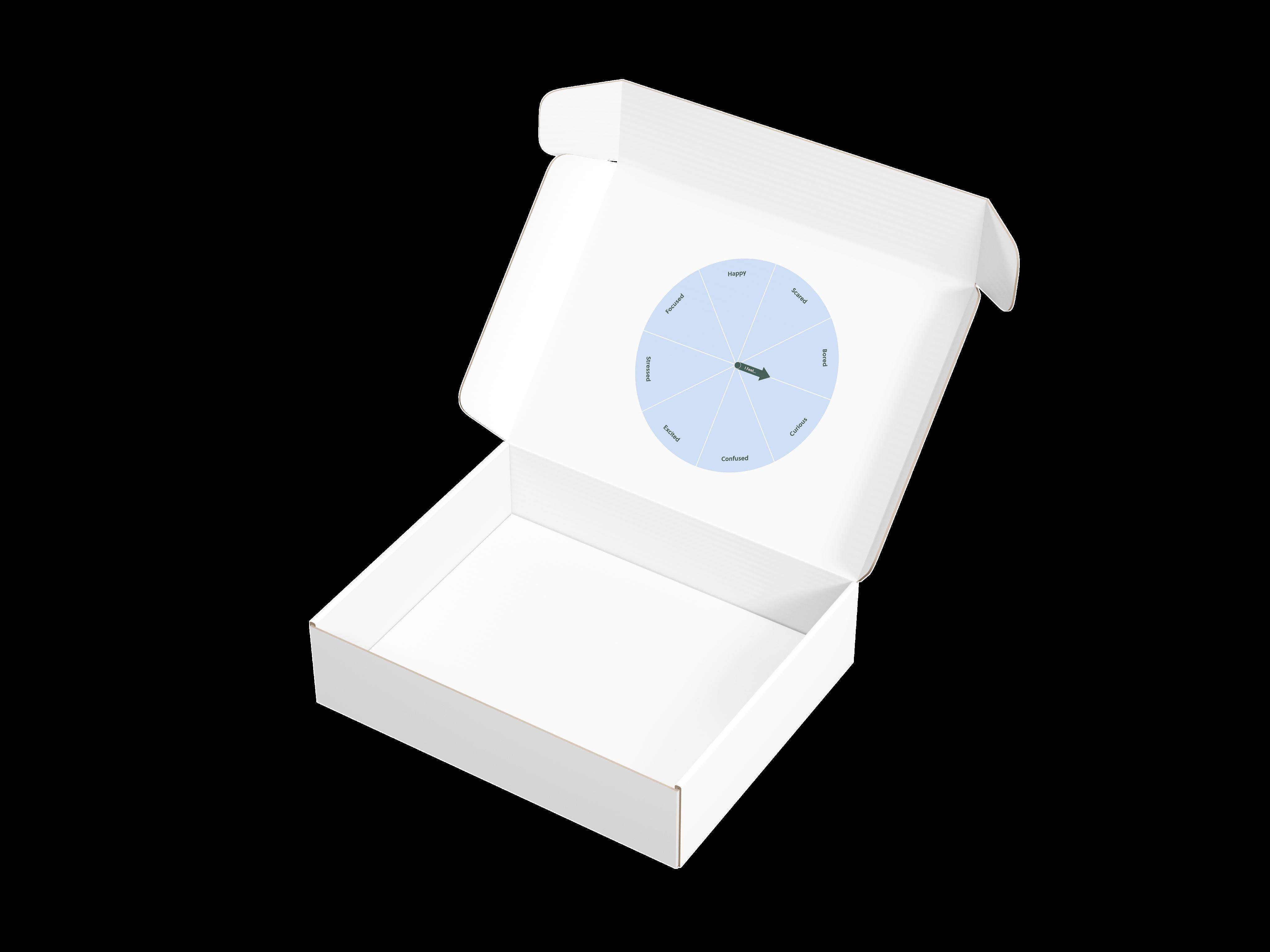Background
Statistics from the Office for Students in the UK show that students are more likely to self-report mental health problems. In a 2025 survey conducted by Student Minds,
57% of respondents said they had experienced mental health problems
27% said they had a clear diagnosis.
International students face
Language barriers, cultural stigma, emotional isolation
Source 1 - Lewis, J. and Stiebahl, S., (2025). Student mental health in England: Statistics, policy, and guidance

Research Topic
SPECIFIC TIME
Early signs of mental illness include social withdrawal、disorganised thinking/speech、impaired reality perception、functional decline.
Early-stage mental health intervention for international students
SPECIFIC RESEARCH TOPIC
Mental health is a state of mental well‑being that enables people to cope with the stresses of life, realise their abilities, learn well, work well, and contribute to their community.
SPECIFIC Group
Easier to receive education, Face greater challenges such as language barriers, cultural stigma, and emotional isolation.
Why The Listening Map?

Durin my research, I found that students often face barriers when tryin to express their real experiences of mental health and campus adaptation
Cultural and language barriers many international students remain silent for fear of bein misunderstood
Overly formal institutional processes interviews and surveys often feel intimidatin and fail to create a safe space for enuine sharin
Lack of peer support mechanisms students prefer more casual ways to share and connect.
This is why I desi ned The Listenin Map. By usin a playful, game-based forma , it lowers he hreshold for expression, allowin students to share their feelin s and experiences more naturally. The process not only helps capture more authentic voices but also fosters empathy and connection amon students, ultimately providin institutions with more inclusive and supportive insi hts.

The Listening Map
Ask to Uncover, Play to Discover.
A participatory board game that transforms questions into a chain of discoveries, encouraging players to uncover diverse experiences while collaboratively building a dataset that imagines fairer and more inclusive futures.








How to use the design kit


The Listening
Mapping
1.Pick up the character in the timeline/map, and use the wheel to express the emotion, depending on what you feel about the mood in that moment.

2.Choose one card that reflect inner world, Answer the card question and share your own story and experience.
3.Whether there are specific experiences they want to highlight and shared.
The design kit combines the Board Game, Information Record Form, and Activity Flow to guide both the process and data collection. Facilitators use it to run the game with students, capture their emotions, experiences, and display a poster as a reference during the event.
Board Game Process

Introduce the ba kground to a group of 5– students. Suggested timing: 2–6 weeks after the start of school, In the space such as the library, dining hall, before or after class, or in dorm common areas.
Place the character on the timeline/map, and use the wheel to express the emotion, depending on what you feel a out the mood in that moment.
Pick a ca d that reflects their inner world and share their stories y answering the questions.

Ask the student whether there are specific experiences they want to highlight.
THE Impact
Build long-term, evolving systems are more influence and more effective.
The project creates a feedback loop where students’ voices are captured and reflected, enabling institutions to respond more effectively and enhance participation and support.
FINAL THOUGHTS BASED
ON REFLECTION
The tool should not end at dialogue but feed into visible institutional action, so students see that their input drives meaningful conversation and change.
The game mechanism can reduce the pressure of formal institutional settings, address inequalities in resource allocation, strengthen the power of peer support, and amplify diverse voices.
While designed for international student wellbeing, the framework can be adapted to workplaces, communities, or policy dialogues where hidden experiences need visibility.
It can function as an entry point for reflection, a midway checkpoint for dialogue, or an end-stage decision aid, depending on the institutional context.
WHERE WILL THE DECISIONMAKING LEAD? HOW DO WE PREVENT BIAS OR INFLUENCE? HOW CAN WE USE IT IN OTHER CONTEXTS? IN WHAT PART OF THE PROCESS WILL IT SIT?
HOW CAN WE INTERVENE BEFORE CRISIS ARISES?
Join the conversation on early-stage mental health intervention. Discover hidden gaps, share your story, and help shape a more supportive and inclusive university experience
Let’s
act before crisis. Let’s co-create wellbeing.
